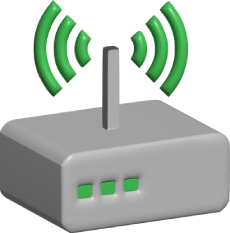A compact device, transceivers act as both the transmitter and receiver of data. They convert signals into physical forms that can travel through cables or other transmission mediums. The procedure is universal in all transceivers. In that they take digital data, convert it into the optimal signal for transport, and then, on the other end, receive the signals and convert them back for processing. Your requirements will depend on many factors. Each transceiver is designed to work under specific conditions and has its own special application.
The Role of Transmission Type

Electrical transceivers are optimal for short-range and low-latency applications. They are not costly, and don’t consume lots of power, but in return, electrical signals are less effective over distance. The signals can degrade through resistance and are subject to electromagnetic interference, or EMI.
Optical transceivers convert the data into light pulses, to be sent through glass or plastic fiber cables for greater distances. They are not affected by EMI, but they need more precise construction and are more sensitive to environmental factors.
In wireless systems, transceivers use RF signals and antennas. These don’t use the traditional data center and enterprise cabling, but the transceivers work in the same way, encoding, transmitting and decoding signals.
Wavelength Requirements

Wavelength can vary drastically between different optical systems. Most transceivers use standard wavelength modes of 850nm for multimode fiber, or 1310nm and 1550nm for single-mode. Multimodes are best suited for making short-reach connections. Single-mode, like LR or ER modules, handle much longer distances, with tighter core sizes and more precise lasers.
Your transceiver must match the wavelength and also the fiber type in your system. Choosing the wrong wavelength can result in poor performance and/or signal loss, and it can be expensive to troubleshoot.
Compatibility Specifications
MSA compliance means most transceivers physically fit into most standard switch ports, but logical compatibility is another story. Many OEMs, especially the big ones, enforce firmware-level locks that only allow their branded optics to operate. Some third-party suppliers offer re-coded optics that get around this, but support levels vary.
Always test in advance if you’re using non-OEM transceivers. Firmware mismatches can cause unpredictable behavior, even if the form factor and signal type are correct.
Compatibility also extends to DOM/CMIS features, which provide real-time monitoring and diagnostics. Not all platforms support all features, so make sure the module can speak the same language as your switch OS.
Speed and Form Factor
Transceivers are made for different data rates; they can start from 1G and go up to 100G and more. The optics must match the link speed. Picking an over-speeding transceiver without adjusting the support can kill performance.
Then, the form factor is another crucial aspect to consider. You must look for transceivers that use the same form factor as the rest of your hardware; a QSFP28 cannot be placed into a port designed for SFP100+. Even in the 100G module range, some switches support QSFP28, whereas others will only work with OSFP or QSFP-DD. Upgrading form factors later will also require replacing transceivers, as well as line cards and switches.
Reach and Range
Not all 100G optics are the same. A 100G-SR4 transceiver is built for 70–100 meters on multimode fiber. A 100G-LR4 handles 10 km on single-mode. A 100G-ZR can go hundreds of kilometers, but that performance comes with a cost in power, price, and precision.
Measure your physical link distances and check fiber specs before buying. If you’re operating near the edge of a transceiver’s rated range, expect potential issues unless you’ve tested it thoroughly under load.
Don’t forget insertion loss; old or patched fiber links may have multiple connector points. Even if you’re within spec on distance, loss budget could kill the link if your optics don’t have the headroom.
Environmental and Operational Considerations
Transceivers get hotter, especially in faster modules. So, what can your switch manage in the thermal profile of the optics that you plan to deploy? Overheated optics are known to self-throttle or fail.
A good idea would be to go for extended temperature range modules if any of your installations involve industrial settings or outdoor points. Not all optics are designed to take the cold of a basement or the burning heat of a comms cabinet. Vibration, humidity, and even dust can all weigh on performance, particularly in sensitive optical equipment.
Choosing the Optimal Transceiver
When assessing the options, think about your bandwidth needs, budgetary requirements, the best medium and the range you are working in. The best solution for short-range servers is copper-based DACs. For spine-leaf interconnects, you’re probably looking at 100G optical modules with MPO fiber. If you’re doing inter-site transport or dark fiber deployments, you might need coherent optics with DWDM support.
Quick links
- An Easy-to-Follow Guide to Multi-Source Agreements for Modern Businesses
- Breaking Down Optical and Electrical Interfaces – What You Need to Know
- Build and Manage Optical Networks Smarter with OptiNetworks Insights
- Challenges and Mistakes Often Encountered in Fiber Network Design
- Everything You Need to Know About Choosing Network Hardware That Works
- Making Optical Networking Easier to Understand at OptiNetworks Insights
- Making the Right Call on Your Network Transceiver
- The Role of CMIs in Optical Transceivers

